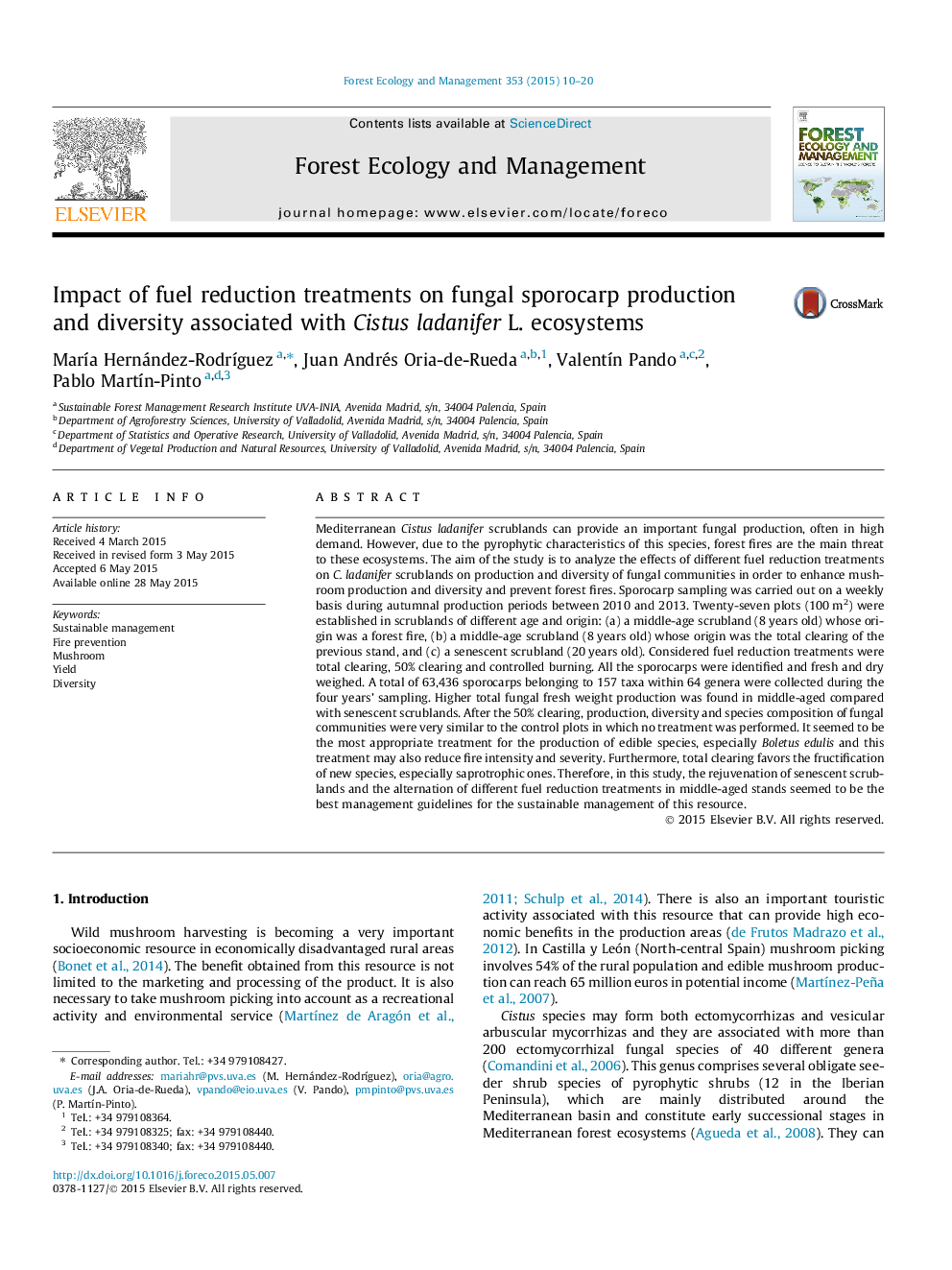| کد مقاله | کد نشریه | سال انتشار | مقاله انگلیسی | نسخه تمام متن |
|---|---|---|---|---|
| 86213 | 159172 | 2015 | 11 صفحه PDF | دانلود رایگان |

• We studied fuel reduction treatments effect on fungal communities in Cistus stands.
• Fungal yield is higher in young scrublands that are less susceptible to forest fires.
• 50% clearing of C. ladanifer stands produce high yields of some valuable species.
• Total clearing of C. ladanifer stands might favor different species fructification.
• Adequate forest management can produce important economic benefits from NWFPs.
Mediterranean Cistus ladanifer scrublands can provide an important fungal production, often in high demand. However, due to the pyrophytic characteristics of this species, forest fires are the main threat to these ecosystems. The aim of the study is to analyze the effects of different fuel reduction treatments on C. ladanifer scrublands on production and diversity of fungal communities in order to enhance mushroom production and diversity and prevent forest fires. Sporocarp sampling was carried out on a weekly basis during autumnal production periods between 2010 and 2013. Twenty-seven plots (100 m2) were established in scrublands of different age and origin: (a) a middle-age scrubland (8 years old) whose origin was a forest fire, (b) a middle-age scrubland (8 years old) whose origin was the total clearing of the previous stand, and (c) a senescent scrubland (20 years old). Considered fuel reduction treatments were total clearing, 50% clearing and controlled burning. All the sporocarps were identified and fresh and dry weighed. A total of 63,436 sporocarps belonging to 157 taxa within 64 genera were collected during the four years’ sampling. Higher total fungal fresh weight production was found in middle-aged compared with senescent scrublands. After the 50% clearing, production, diversity and species composition of fungal communities were very similar to the control plots in which no treatment was performed. It seemed to be the most appropriate treatment for the production of edible species, especially Boletus edulis and this treatment may also reduce fire intensity and severity. Furthermore, total clearing favors the fructification of new species, especially saprotrophic ones. Therefore, in this study, the rejuvenation of senescent scrublands and the alternation of different fuel reduction treatments in middle-aged stands seemed to be the best management guidelines for the sustainable management of this resource.
Journal: Forest Ecology and Management - Volume 353, 1 October 2015, Pages 10–20